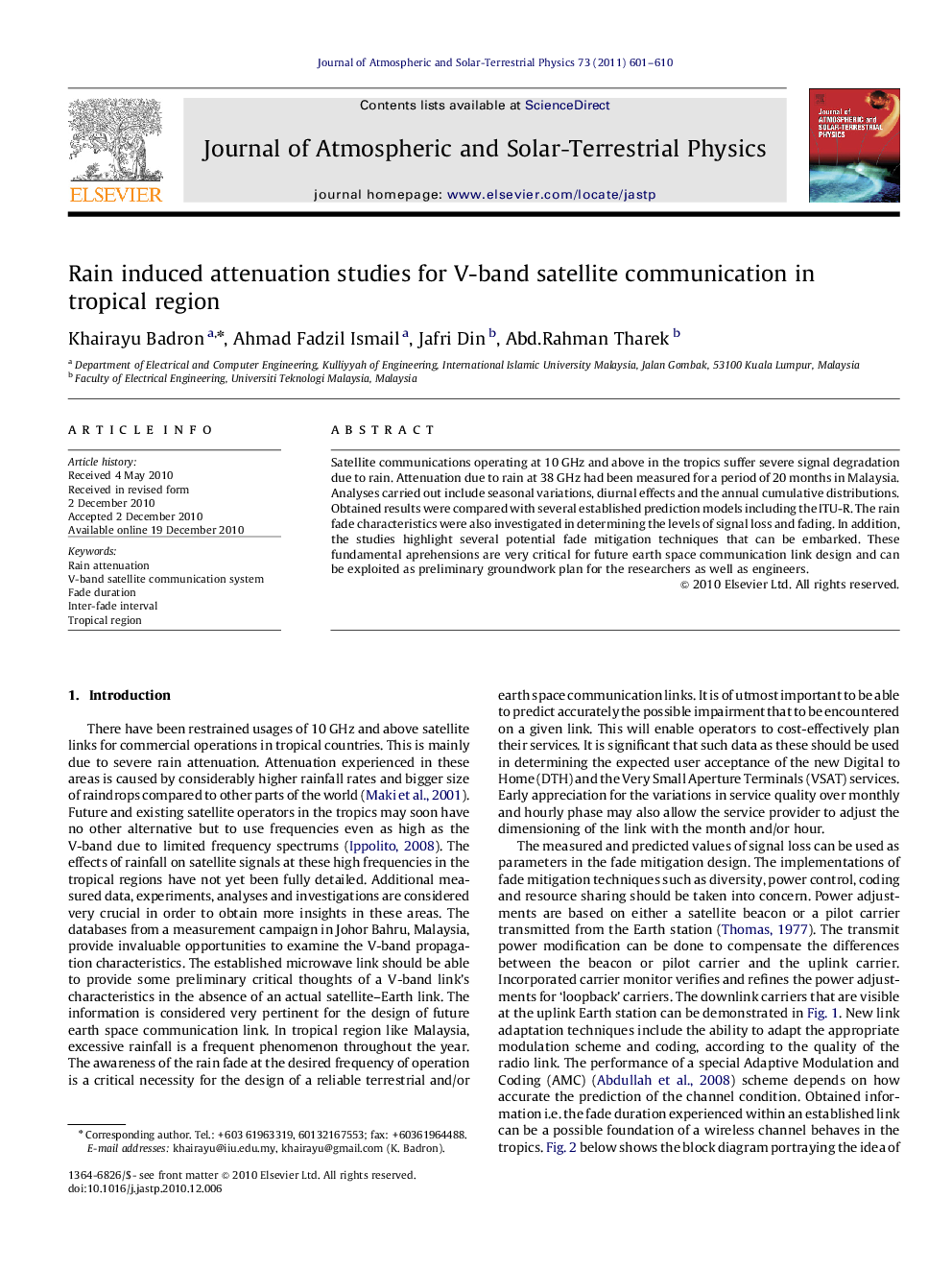| Article ID | Journal | Published Year | Pages | File Type |
|---|---|---|---|---|
| 1777360 | Journal of Atmospheric and Solar-Terrestrial Physics | 2011 | 10 Pages |
Satellite communications operating at 10 GHz and above in the tropics suffer severe signal degradation due to rain. Attenuation due to rain at 38 GHz had been measured for a period of 20 months in Malaysia. Analyses carried out include seasonal variations, diurnal effects and the annual cumulative distributions. Obtained results were compared with several established prediction models including the ITU-R. The rain fade characteristics were also investigated in determining the levels of signal loss and fading. In addition, the studies highlight several potential fade mitigation techniques that can be embarked. These fundamental aprehensions are very critical for future earth space communication link design and can be exploited as preliminary groundwork plan for the researchers as well as engineers.
Research highlights► We provide the annual, diurnal and hourly CDF analyses of preliminary results of the V-band of the extended Earth–satellite link. ► We quantify the rain propagation characteristics related to V-band link operating in an equatorial climate and review the possible countermeasure technique using fade duration. ► We compare the scaled-up measured link with those predicted values for V-band satellite link. ► We analyse the data of fade characteristics and worst month statistics for the scaled up V-band link. ► We also investigate the rain attenuation pattern and intensification for hourly, daily, monthly and annually in Malaysia.
